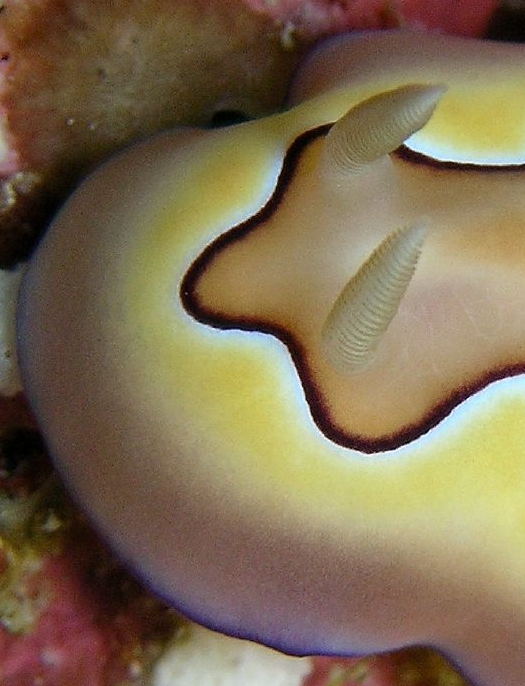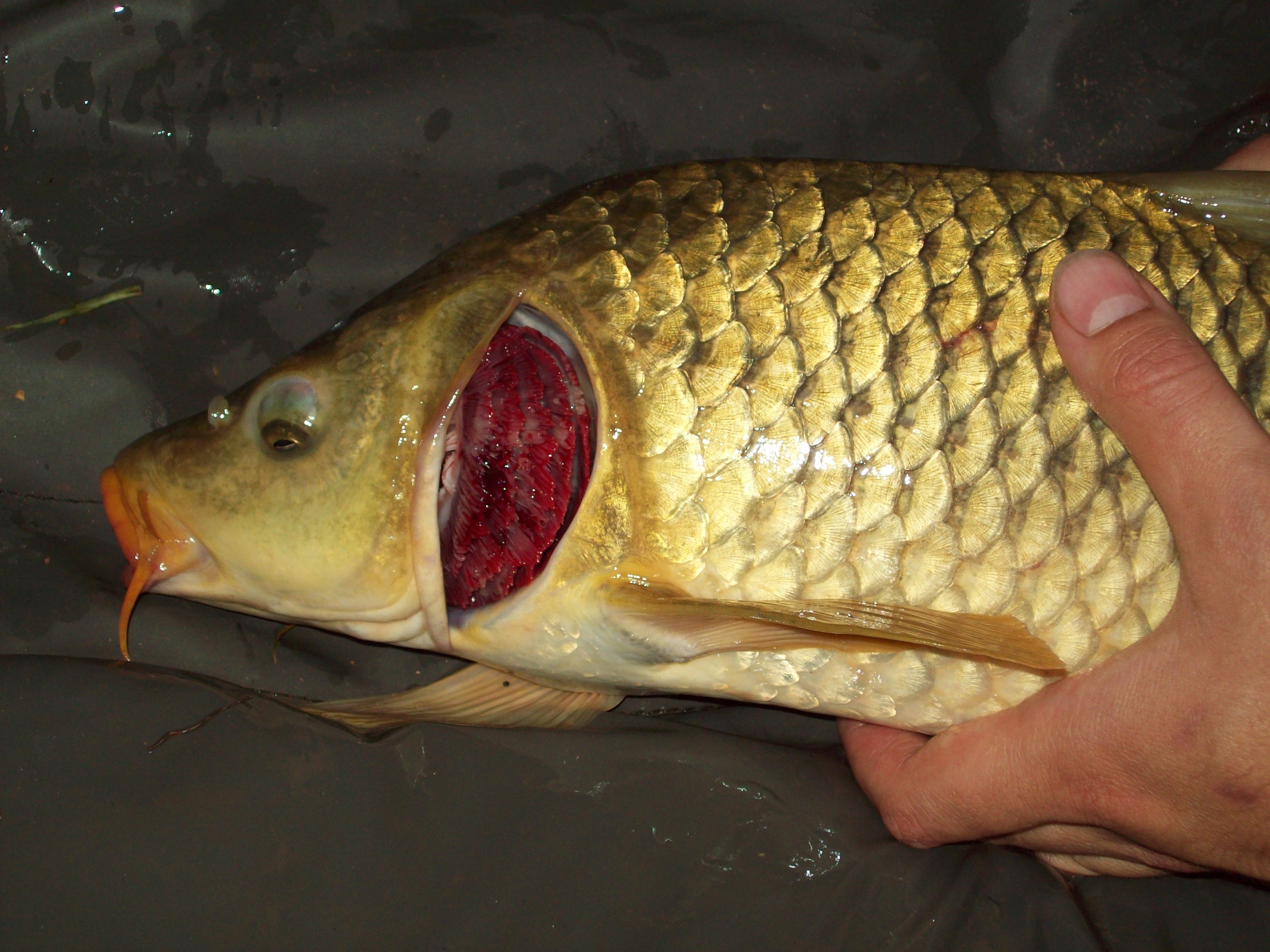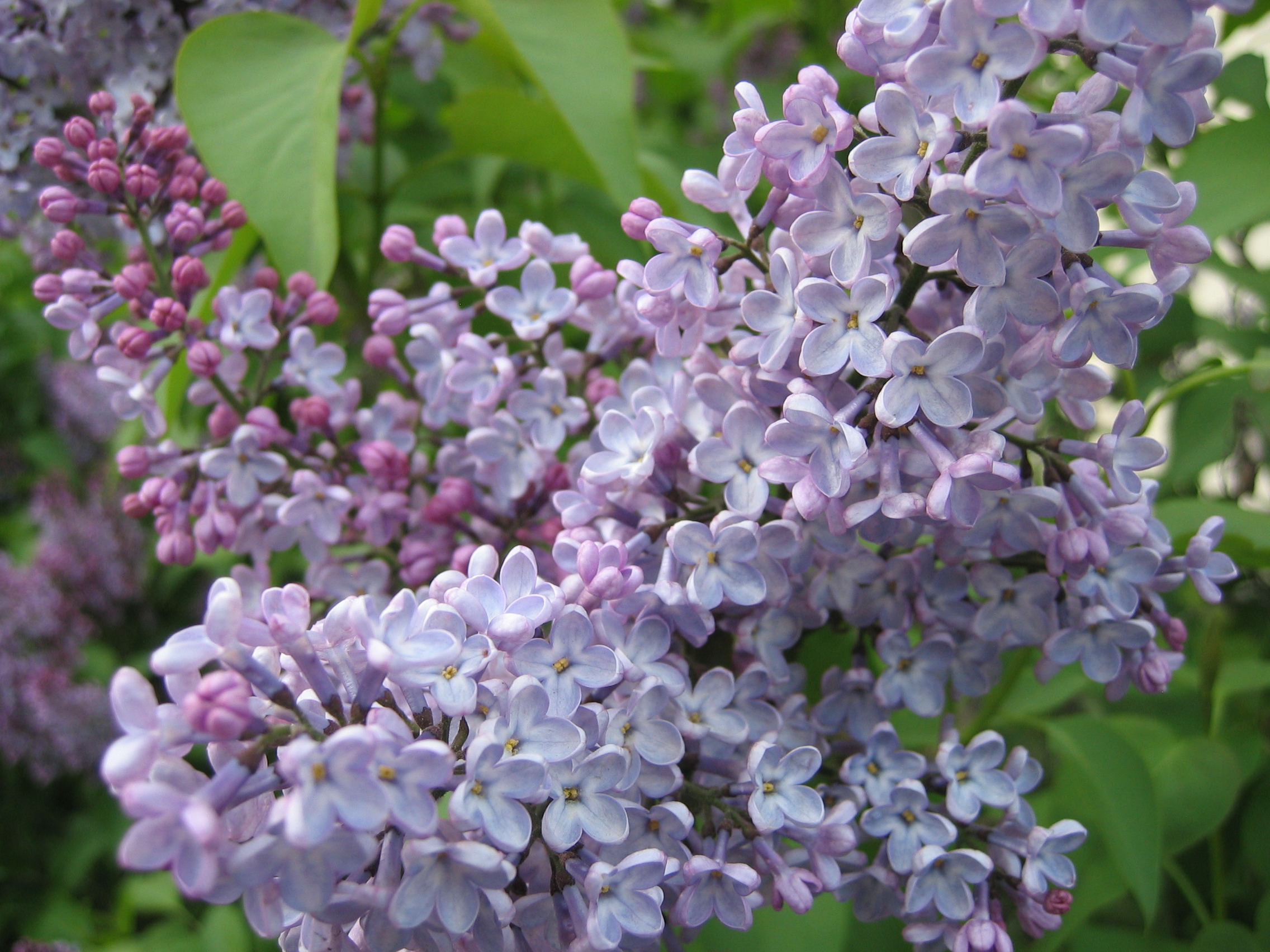|
Mexichromis Similaris
''Mexichromis similaris'' is a species of sea slug or dorid nudibranch, a marine gastropod mollusk in the family Chromodorididae.Bouchet, P. (2012)''Mexichromis similaris''.Accessed through: World Register of Marine Species at on 2012-05-28 Distribution This nudibranch is found in the tropical Western Pacific Ocean.Rudman, W.B., 1999 (August 13''Durvilledoris similaris'' Rudman, 1986. nSea Slug Forum. Australian Museum, Sydney.] Description ''Mexichromis similaris'' has a pale- Lilac (color), lilac or violet body, with pale-orange gills and rhinophores. The mantle is edged with a white band, and there is a long white line running down its dorsum. This species is easily confused with other similarly coloured nudibranchs, especially '' Hypselodoris shimodaensis'' and ''Mexichromis trilineata''. This nudibranch can reach a total length of at least 14 mm, and like all Chromodorids, feeds on sponges Sponges, the members of the phylum Porifera (; meaning 'pore bea ... [...More Info...] [...Related Items...] OR: [Wikipedia] [Google] [Baidu] |
Basionym
In the scientific name of organisms, basionym or basyonym means the original name on which a new name is based; the author citation of the new name should include the authors of the basionym in parentheses. The term "basionym" is used in both botany and zoology. In zoology, alternate terms such as original combination or protonym are sometimes used instead. Bacteriology uses a similar term, basonym, spelled without an ''i''. Although "basionym" and "protonym" are often used interchangeably, they have slightly different technical definitions. A basionym is the ''correct'' spelling of the original name (according to the applicable nomenclature rules), while a protonym is the ''original'' spelling of the original name. These are typically the same, but in rare cases may differ. Use in botany The term "basionym" is used in botany only for the circumstances where a previous name exists with a useful description, and the ''International Code of Nomenclature for algae, fungi, and plants ... [...More Info...] [...Related Items...] OR: [Wikipedia] [Google] [Baidu] |
Western Pacific Ocean
The Pacific Ocean is the largest and deepest of Earth's five oceanic divisions. It extends from the Arctic Ocean in the north to the Southern Ocean (or, depending on definition, to Antarctica) in the south, and is bounded by the continents of Asia and Oceania in the west and the Americas in the east. At in area (as defined with a southern Antarctic border), this largest division of the World Ocean—and, in turn, the hydrosphere—covers about 46% of Earth's water surface and about 32% of its total surface area, larger than Earth's entire land area combined .Pacific Ocean . '' Britannica Concise.'' 2008: Encyclopædia Britannica, Inc. The centers of both the [...More Info...] [...Related Items...] OR: [Wikipedia] [Google] [Baidu] |
Mexichromis Trilineata
''Mexichromis trilineata'' is a colourful species of sea slug, specifically a dorid nudibranch. This marine gastropod mollusc is in the family Chromodorididae. In 2012 the genus ''Pectenodoris'' was included into ''Mexichromis''. Distribution ''Mexichromis trilineata'' has been found in Sumbawa, Sulawesi and Bali, Indonesia; the Philippines, the South China Sea, Heron Island, Great Barrier Reef and Queensland, Australia. Description ''Mexichromis trilineata'' usually ranges from 7 mm to 15 mm in length, with an elongate to broadly oval body shape. The tail extends slightly beyond the posterior margin. ''Mexichromis trilineata'' have three yellow longitudinal bands outlined in white, with the entire mantle A mantle is a piece of clothing, a type of cloak. Several other meanings are derived from that. Mantle may refer to: *Mantle (clothing), a cloak-like garment worn mainly by women as fashionable outerwear **Mantle (vesture), an Eastern Orthodox ve ... edged wit ... [...More Info...] [...Related Items...] OR: [Wikipedia] [Google] [Baidu] |
Hypselodoris Shimodaensis
''Hypselodoris shimodaensis'' is a species of colourful sea slug or dorid nudibranch, a marine gastropod mollusk in the family Chromodorididae.MolluscaBase (2018)''Hypselodoris shimodaensis'' Baba, 1994.Accessed on 2019-01-21. Distribution This species is known from Japan Japan ( ja, 日本, or , and formally , ''Nihonkoku'') is an island country in East Asia. It is situated in the northwest Pacific Ocean, and is bordered on the west by the Sea of Japan, while extending from the Sea of Okhotsk in the north .... Description ''Hypselodoris shimodaensis'' has a pale pink-purple mantle and body with a white line down the middle of the back and a white margin to the mantle. The mid-dorsal line stops between the rhinophores at the front and encircles the gill pocket at the back. There is a white line along the top of the foot which extends behind the mantle. The rhinophore clubs are orange with purple bases and the outer two-thirds of the gill leaves are orange. [...More Info...] [...Related Items...] OR: [Wikipedia] [Google] [Baidu] |
Dorsum (anatomy)
Standard anatomical terms of location are used to unambiguously describe the anatomy of animals, including humans. The terms, typically derived from Latin or Greek roots, describe something in its standard anatomical position. This position provides a definition of what is at the front ("anterior"), behind ("posterior") and so on. As part of defining and describing terms, the body is described through the use of anatomical planes and anatomical axes. The meaning of terms that are used can change depending on whether an organism is bipedal or quadrupedal. Additionally, for some animals such as invertebrates, some terms may not have any meaning at all; for example, an animal that is radially symmetrical will have no anterior surface, but can still have a description that a part is close to the middle ("proximal") or further from the middle ("distal"). International organisations have determined vocabularies that are often used as standard vocabularies for subdisciplines of ana ... [...More Info...] [...Related Items...] OR: [Wikipedia] [Google] [Baidu] |
Rhinophores
A rhinophore is one of a pair of chemosensory club-shaped, rod-shaped or ear-like structures which are the most prominent part of the external head anatomy in sea slugs, marine gastropod opisthobranch mollusks such as the nudibranchs, sea hares (Aplysiomorpha), and sap-sucking sea slugs (Sacoglossa). Etymology The name relates to the rhinophore's function as an organ of "smell". ''Rhino-'' means nose from Ancient Greek ῥίς ''rhis'' and from its genitive ῥινός ''rhinos''. "Phore" means "to bear" from New Latin ''-phorus'' and from Greek -phoros (φορος) "bearing", a derivative of ''phérein'' (φέρειν). Function Rhinophores are scent or taste receptors, also known as chemosensory organs situated on the dorsal surface of the head. They are primarily used for distance chemoreception and rheoreception (response to water current). The "scents" detected by rhinophores are chemicals dissolved in the sea water. The fine structure and hairs of the rhinophore ... [...More Info...] [...Related Items...] OR: [Wikipedia] [Google] [Baidu] |
Gills
A gill () is a respiratory organ that many aquatic organisms use to extract dissolved oxygen from water and to excrete carbon dioxide. The gills of some species, such as hermit crabs, have adapted to allow respiration on land provided they are kept moist. The microscopic structure of a gill presents a large surface area to the external environment. Branchia (pl. branchiae) is the zoologists' name for gills (from Ancient Greek ). With the exception of some aquatic insects, the filaments and lamellae (folds) contain blood or coelomic fluid, from which gases are exchanged through the thin walls. The blood carries oxygen to other parts of the body. Carbon dioxide passes from the blood through the thin gill tissue into the water. Gills or gill-like organs, located in different parts of the body, are found in various groups of aquatic animals, including mollusks, crustaceans, insects, fish, and amphibians. Semiterrestrial marine animals such as crabs and mudskippers have gill chambe ... [...More Info...] [...Related Items...] OR: [Wikipedia] [Google] [Baidu] |
Lilac (color)
Lilac is a color that is a pale violet tone representing the average color of most lilac flowers. The colors of some lilac flowers may be equivalent to the colors shown below as ''pale lilac'', ''rich lilac'', or ''deep lilac''. However, there are other lilac flowers that are colored red-violet. The first recorded use of ''lilac'' as an English color name was in 1775. The color "lilac" has an eponymous book published in 2018 by Coloratura Publisher. Variations Pale lilac Pale lilac is the color represented as ''lilac'' in the ISCC-NBS color list. The source of this color is sample 209 in the ISCC-NBS Dictionary of Color Names (1955). Bright lilac The color bright lilac (displayed on the right) is the color labeled ''lilac'' by Crayola in 1994 as one of the colors in its Magic Scent specialty box of colors. Rich lilac Rich lilac, a rich tone of lilac labeled ''lilac'' at Pourpre.com (a popular French color list), is shown at right. Another name for this ... [...More Info...] [...Related Items...] OR: [Wikipedia] [Google] [Baidu] |
Chromodorididae
Chromodorididae, or chromodorids, are a taxonomic family of colourful, sea slugs; dorid nudibranchs, marine gastropod mollusks in the superfamily Doridoidea. “Chromodorid nudibranchs are among the most gorgeously coloured of all animals.” The over 360 described species are primarily found in tropical and subtropical waters, as members of coral reef communities, specifically associated with their sponge prey. The chromodorids are the most speciose family of opisthobranchs. They range in size from <10mm to over 30 cm, although most species are approximately 15–30 mm in size. Although, they have a worldwide distribution, most species are found in the region. A scientific paper published in 2007, found the most widespread chromodorid genera, ('' |
Species
In biology, a species is the basic unit of Taxonomy (biology), classification and a taxonomic rank of an organism, as well as a unit of biodiversity. A species is often defined as the largest group of organisms in which any two individuals of the appropriate sexes or mating types can reproduction, produce Fertility, fertile offspring, typically by sexual reproduction. Other ways of defining species include their karyotype, DNA sequence, morphology (biology), morphology, behaviour or ecological niche. In addition, paleontologists use the concept of the chronospecies since fossil reproduction cannot be examined. The most recent rigorous estimate for the total number of species of eukaryotes is between 8 and 8.7 million. However, only about 14% of these had been described by 2011. All species (except viruses) are given a binomial nomenclature, two-part name, a "binomial". The first part of a binomial is the genus to which the species belongs. The second part is called the specifi ... [...More Info...] [...Related Items...] OR: [Wikipedia] [Google] [Baidu] |
Family (biology)
Family ( la, familia, plural ') is one of the eight major hierarchical taxonomic ranks in Linnaean taxonomy. It is classified between order and genus. A family may be divided into subfamilies, which are intermediate ranks between the ranks of family and genus. The official family names are Latin in origin; however, popular names are often used: for example, walnut trees and hickory trees belong to the family Juglandaceae, but that family is commonly referred to as the "walnut family". What belongs to a family—or if a described family should be recognized at all—are proposed and determined by practicing taxonomists. There are no hard rules for describing or recognizing a family, but in plants, they can be characterized on the basis of both vegetative and reproductive features of plant species. Taxonomists often take different positions about descriptions, and there may be no broad consensus across the scientific community for some time. The publishing of new data and opi ... [...More Info...] [...Related Items...] OR: [Wikipedia] [Google] [Baidu] |
Mollusk
Mollusca is the second-largest phylum of invertebrate animals after the Arthropoda, the members of which are known as molluscs or mollusks (). Around 85,000 extant species of molluscs are recognized. The number of fossil species is estimated between 60,000 and 100,000 additional species. The proportion of undescribed species is very high. Many taxa remain poorly studied. Molluscs are the largest marine phylum, comprising about 23% of all the named marine organisms. Numerous molluscs also live in freshwater and terrestrial habitats. They are highly diverse, not just in size and anatomical structure, but also in behaviour and habitat. The phylum is typically divided into 7 or 8 taxonomic classes, of which two are entirely extinct. Cephalopod molluscs, such as squid, cuttlefish, and octopuses, are among the most neurologically advanced of all invertebrates—and either the giant squid or the colossal squid is the largest known invertebrate species. The ... [...More Info...] [...Related Items...] OR: [Wikipedia] [Google] [Baidu] |
.jpg)




